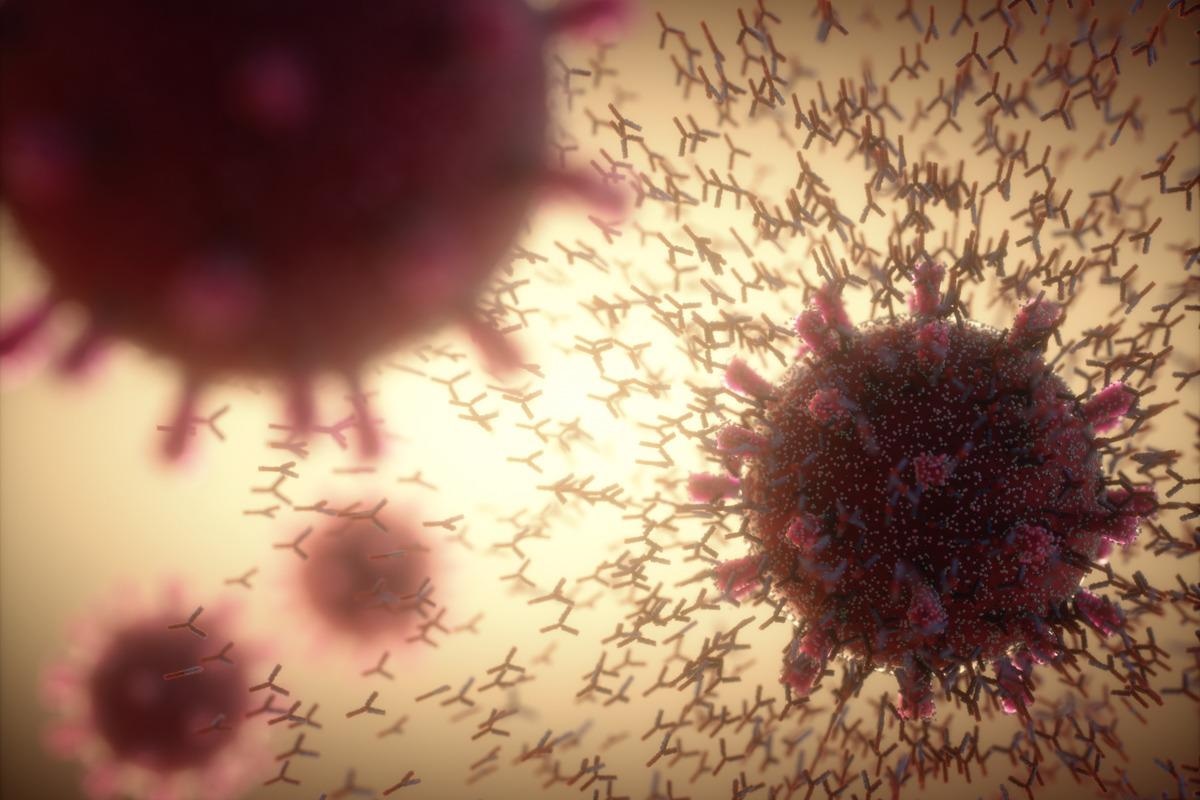In a recent study published in Nature Microbiology*, researchers investigated the dynamics and longevity of neutralizing antibody (nAb) response up to 480 days after the onset of infection in convalescent coronavirus disease 2019 (COVID-19) patients.
 Study: Longitudinal analysis of antibody dynamics in COVID-19 convalescents reveals neutralizing responses up to 16 months after infection. Image Credit: ktsdesign/Shutterstock
Study: Longitudinal analysis of antibody dynamics in COVID-19 convalescents reveals neutralizing responses up to 16 months after infection. Image Credit: ktsdesign/Shutterstock
Although studies have extensively investigated antibody dynamics of severe acute respiratory syndrome coronavirus 2 (SARS-CoV-2) infection, the size of study cohorts, the shorter study period, and the unavailability of a proper virus-based method for nAb response detection restricted obtaining accurate results.
Studying long-term nAb response in COVID-19 convalescents could help researchers understand the dynamic change and longevity of the nAb binding and response. Since nAbs play a crucial role in controlling SARS-CoV-2 infection and re-infection, nAbs and convalescent plasma may also be evaluated for therapeutic use in a clinical setting.
About the study
In the present study, researchers enrolled a total of 214 COVID-19 patients (convalescents), of which 51, 134, and 29 were in the severe, the mild, and the asymptomatic group, respectively. There were 46.73% males in the study cohort with an average age of 48 years, and the patients in the severe group were older than those in the other two groups.
The researchers collected a total of 411 plasma samples for nAb titer measurements sequentially between 1 and 480 days after illness onset (d.a.o) or laboratory confirmation, with 211 samples collected over 180 days and 134 samples over 360 days.
The researchers used enzyme-linked immunosorbent assay (ELISA) to measure the immunoglobulin-G (IgG) responses against the receptor-binding domain (RBD) of the spike (S) glycoprotein of SARS-CoV-2. They also tested 48 samples for determining their neutralizing activities against the circulating variants using pseudotyped microneutralization (MN) assay.
Study findings
The results showed a 100% positive rate for anti-RBD IgG responses against live SARS-CoV-2 in plasma samples collected between 180 and 330 d.a.o.; however, positivity rates increased from 90.9 to 100% and 72 to 87.5% between 331 and 480 d.a.o., respectively. Meanwhile, MN titers peaked at ~120 d.a.o. and their distribution during 180–480 d.a.o. showed that individuals with MN titers ≥160 declined rapidly. The rapid increase in MN titers ranging from negative to 80 indicated a decline in neutralizing activity in COVID-19 convalescents.
Additionally, a significant reduction in nAb responses was observed in 91.67% of COVID-19 convalescents. Despite a decline in nAb responses, most of the COVID-19 convalescents had detectable anti-RBD IgG and MN titers at 400–480 d.a.o. At 330–480 d.a.o., undetectable neutralizing activity was observed in 14.41% (16/111) of the mild and 50% (5/10) of the asymptomatic groups.
The authors also noted a significant correlation between the anti-RBD IgG and MN titers, especially in severe and mild groups; combining the IgG response and the MN titer measurements resulted in a high coincidence rate of 93.19%.
These findings indicated that despite a substantial decrease in neutralizing activities against SARS-CoV-2 Beta, Delta, and Mu variants, the observed persistent antibody-dependent immunity could protect against circulating SARS-CoV-2 variants even after one year of onset of infection.
Further, the overall positive rates of IgG and nAbs increased in the severe, mild, and asymptomatic groups with disease progression. To compare the peak anti-RBD IgG levels and MN titers in these three groups, the authors only included individuals in whom the peak anti-RBD IgG and MN titers occurred before 270 d.a.o. Of all the three groups, the severe group exhibited the highest current anti-RBD IgG levels, and the asymptomatic group showed the lowest anti-RBD IgG levels.
Regarding the current MN titers, the severe group showed the highest, and there was no significant difference between the mild and asymptomatic groups. These results indicated that severe COVID-19 patients developed and maintained a more robust nAb response compared to individuals in the asymptomatic and mild groups.
On analyzing the general kinetics of anti-RBD IgG and MN titers in COVID-19 convalescents, the authors observed an increase in both as the disease progressed, peaking at around 120 d.a.o. Anti-RBD IgG and MN titers gradually decreased slowly and remained relatively stable after 400 d.a.o.
Conclusions
The current study provided a precise and comprehensive assessment of nAb responses against SARS-CoV-2 infection in asymptomatic, mild, and severely ill COVID-19 convalescents. Although a marked decline in neutralizing activity was observed over time, the nAb responses persisted for up to 480 days in most symptomatic COVID-19 convalescents.
The study addressed a key question regarding what level of the nAb response could protect against SARS-CoV-2 infection or re-infection. The results showed that nAb responses were undetectable in 14.41% for the mild group and 50% for the asymptomatic group after 330 days, thus suggesting that timely diagnosis and COVID-19 vaccination are necessary to maintain antibody-mediated protection against SARS-CoV-2 in such individuals.
Another significant finding was that although re-infections could occur in COVID-19 convalescents or vaccinees, the rate of symptomatic re-infections and severe disease will be much lower than in primary infection cases. Therefore, future studies should make more clinically relevant assessments to inform vaccination strategies for COVID-19 convalescents and the former vaccinees.
-
Yang, Y. et al. (2022) "Longitudinal analysis of antibody dynamics in COVID-19 convalescents reveals neutralizing responses up to 16 months after infection", Nature Microbiology. doi: 10.1038/s41564-021-01051-2. https://www.nature.com/articles/s41564-021-01051-2
Posted in: Medical Science News | Medical Research News | Disease/Infection News
Tags: Antibody, Assay, Convalescent Plasma, Coronavirus, Coronavirus Disease COVID-19, covid-19, Enzyme, Glycoprotein, immunity, Immunoglobulin, Laboratory, Microbiology, Receptor, Respiratory, SARS, SARS-CoV-2, Severe Acute Respiratory, Severe Acute Respiratory Syndrome, Syndrome, Virus

Written by
Neha Mathur
Neha Mathur has a Master’s degree in Biotechnology and extensive experience in digital marketing. She is passionate about reading and music. When she is not working, Neha likes to cook and travel.
Source: Read Full Article